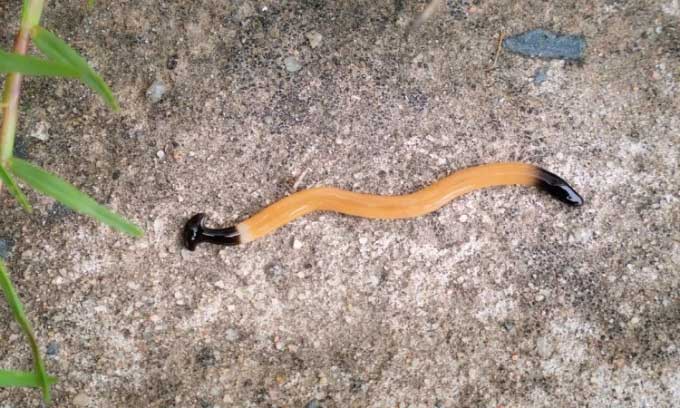Experts note that hammerhead worms are spreading across the eastern states of the U.S. due to favorable climate conditions and a lack of natural predators.
Hammerhead worms slither like snakes and resemble strands of spaghetti, with a head that flares out like a mushroom. This species secretes tetrodotoxin, a neurotoxin commonly found in pufferfish. When a hammerhead worm is cut into pieces, each segment can function as an independent worm, moving away and regenerating into multiple other slippery worms, Washington Post reported on July 22.

Hammerhead worms can transform into multiple new individuals when cut. (Photo: Wichatsurin).
“These worms are among the craziest creatures I have ever seen, and quite frightening,” said entomologist Michael Raupp from the University of Maryland.
Hammerhead worms (Bipalium) are an invasive flatworm species from Asia that can spread to new locations through the export of crops. Numerous hammerhead worms have been reported across Washington state recently. According to the iNaturalist app, authorities have recorded 43 cases in Arlington, 16 cases in D.C., 248 cases in Virginia, and 91 cases in Maryland over the past 15 years.
Research indicates that hammerhead worms have spread worldwide, particularly along the East Coast of the U.S. Computer models suggest that the eastern states will continue to provide a suitable environment for hammerhead worms as the climate warms. However, they do not pose a threat to humans unless ingested or mishandled.
Experts state that hammerhead worms can cause irritation upon contact. Additionally, like many other flatworm species, they carry parasitic roundworms and can threaten pets. However, hammerhead worms are very sensitive to light and typically do not appear when the sun is high. Lacking natural predators in the Washington area, hammerhead worms are voracious predators, willing to consume much larger invertebrates such as earthworms, snails, and slugs.
According to biologist Amber Stokes from California State University, Bakersfield, hammerhead worms are unique because they contain tetrodotoxin (TTX), which causes muscle paralysis. They have the potential to disrupt invertebrate populations, threatening the food chain. Eradicating this species is very challenging. Originating from climates similar to the Mid-Atlantic region, they do not die in cold winter weather, and cutting them will only lead to regeneration into new individuals. According to naturalist Alonso Abugattas, there are no effective methods for managing hammerhead worms that do not harm other wildlife.


















































